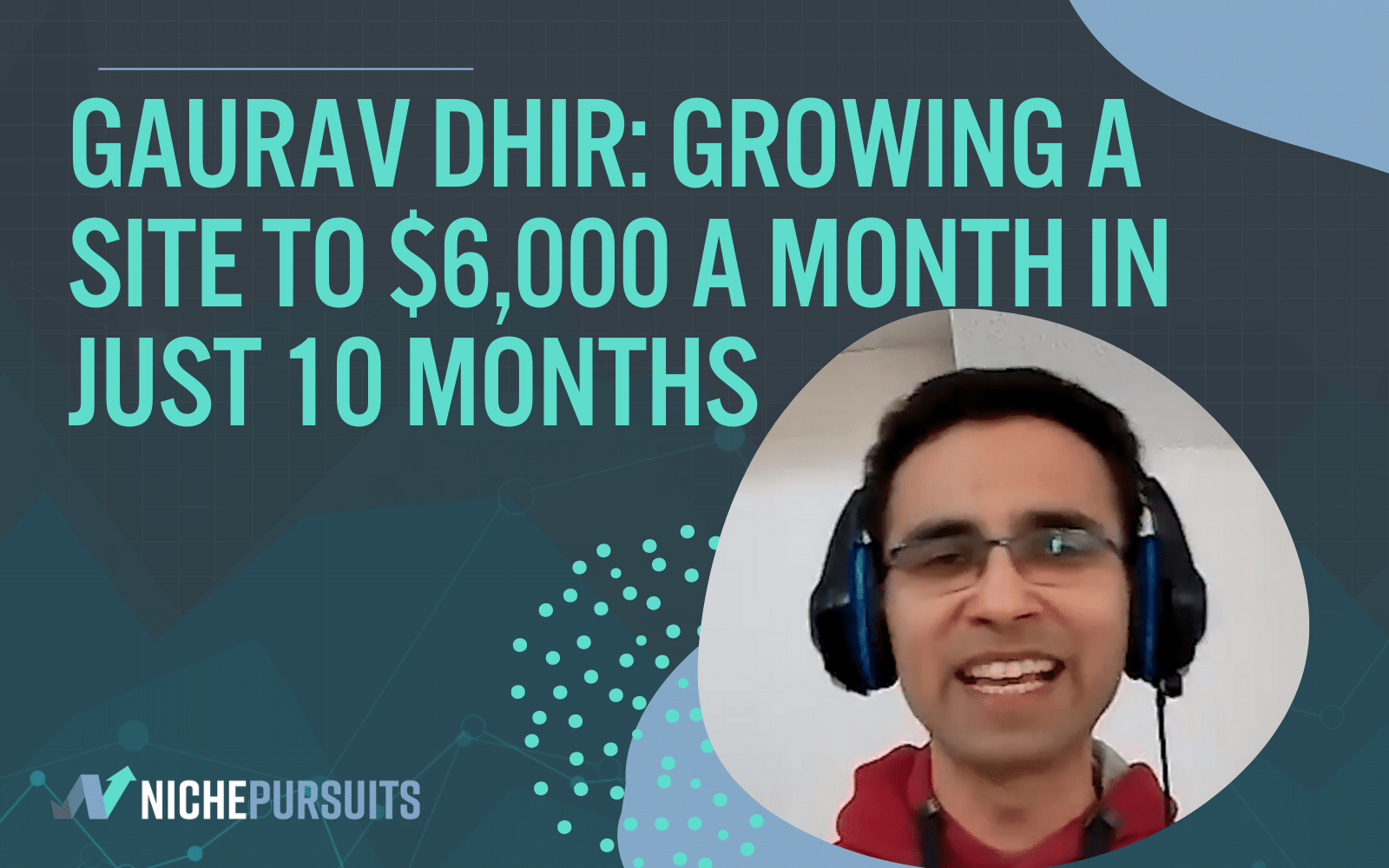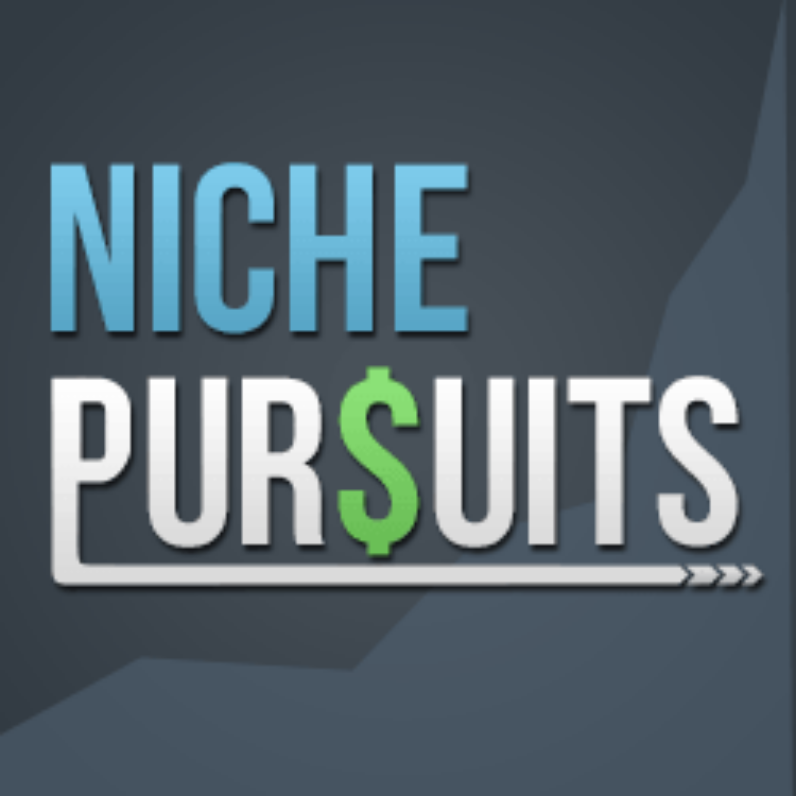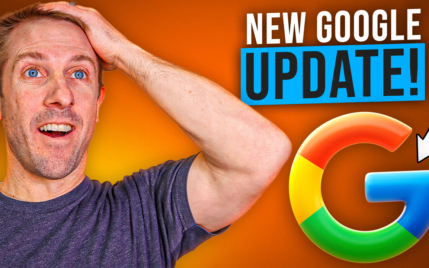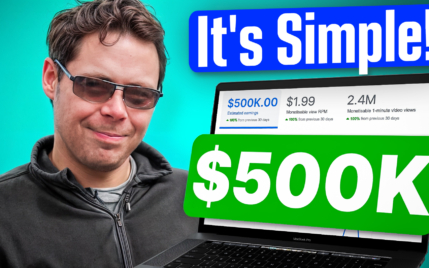YouTube Vs TikTok: Which Video Platform Should Be Your Focus?

When you buy something through one of the links on our site, we may earn an affiliate commission.
The debate over the best video platform usually revolves around YouTube vs TikTok. While both YouTube and TikTok center their platforms around video, they significantly differ in look, feel, and functionality.
Whether you're building a new audience or wanting to enjoy your free time, knowing these differences will help you get the most from each platform without wasting your time.
Take a look at the key features of each platform along with pricing options and understand which one is best for creators and users alike.
Contents
YouTube vs TikTok: Key Differences
YouTube and TikTok have emerged as digital platform titans, offering unique experiences tailored to different audiences and creators.
Here are a few key differences between the two:
- Video Length - YouTube allows for a broad range of video lengths, from brief clips to long-form content, whereas TikTok promotes engaging content that is typically less than 10 minutes long.
- Demographics - YouTube appeals to a wide range of age groups with diverse interests, while TikTok predominantly captures the attention of a younger demographic.
- Mobile vs. PC - YouTube is optimized for desktop and mobile use, providing a comprehensive experience across devices, whereas TikTok is designed with a mobile-first approach, prioritizing smartphone users.
- Pricing - YouTube offers a free, ad-supported version and a Premium subscription for an ad-free experience, while TikTok operates on a completely free model, incorporating ads into its video feed.
A Brief YouTube Overview
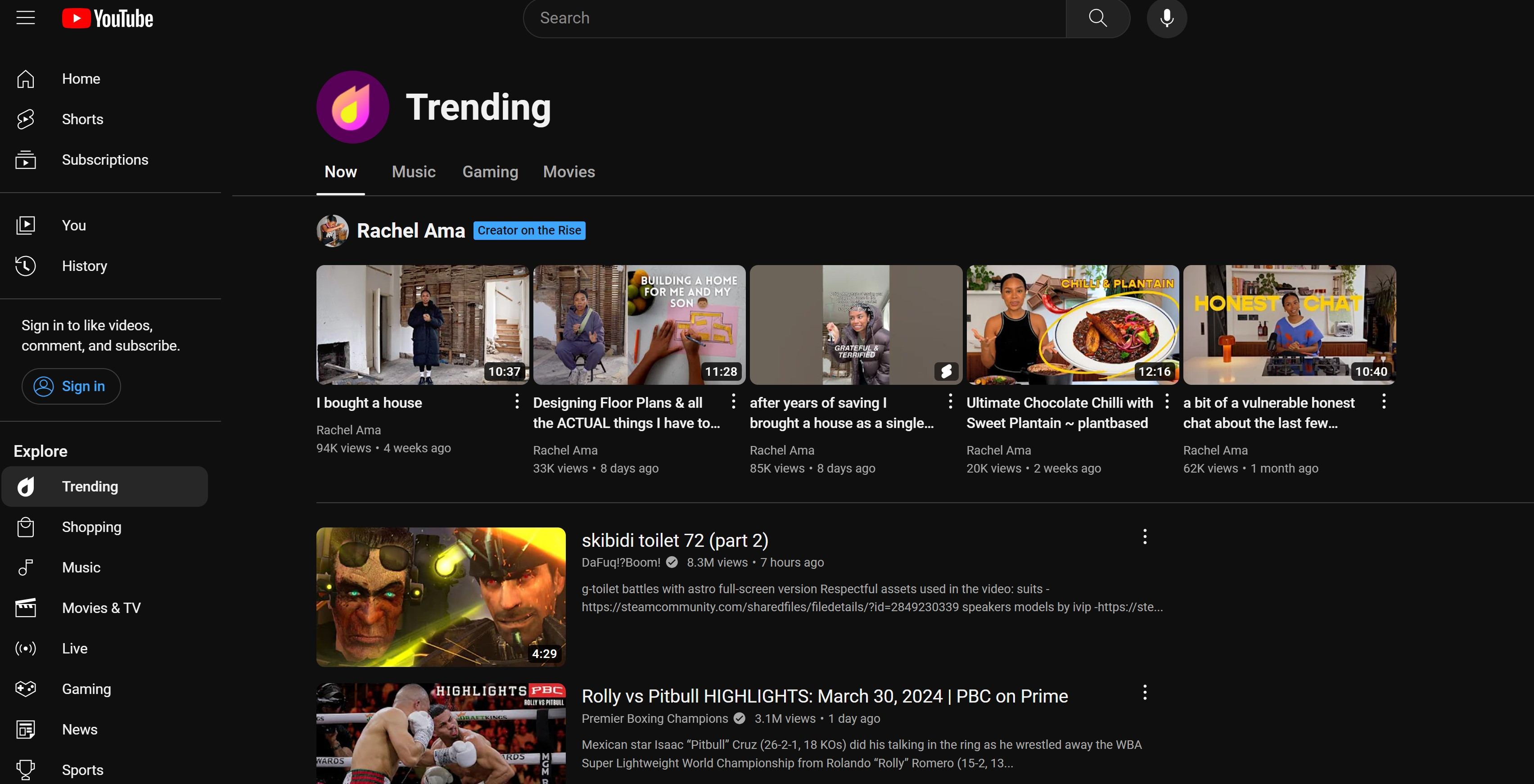
Originally launched in 2005 by former PayPal employees, YouTube has become one of the digital age's cornerstone platforms.
The main reason for its meteoric rise is the novel way individuals worldwide can share their lives, insights, and creativity through video media.
Its user-friendly interface allows viewers to watch, like, share, comment on, and even upload videos of their own. Over the years, it has fostered a vibrant community of creators and viewers alike.
Here are a few stats to help give some context on YouTube's popularity:
- 2.4 billion logged-in users
- The second most visited site in the world (under Google)
- 500 hours of content uploaded every hour.
These stats have helped YouTube become a launchpad for aspiring creators and entrepreneurs. The platform offers tools like the YouTube Partner Program, which enables monetization and supports creators in turning their passion into a profession.
A Brief TikTok Overview
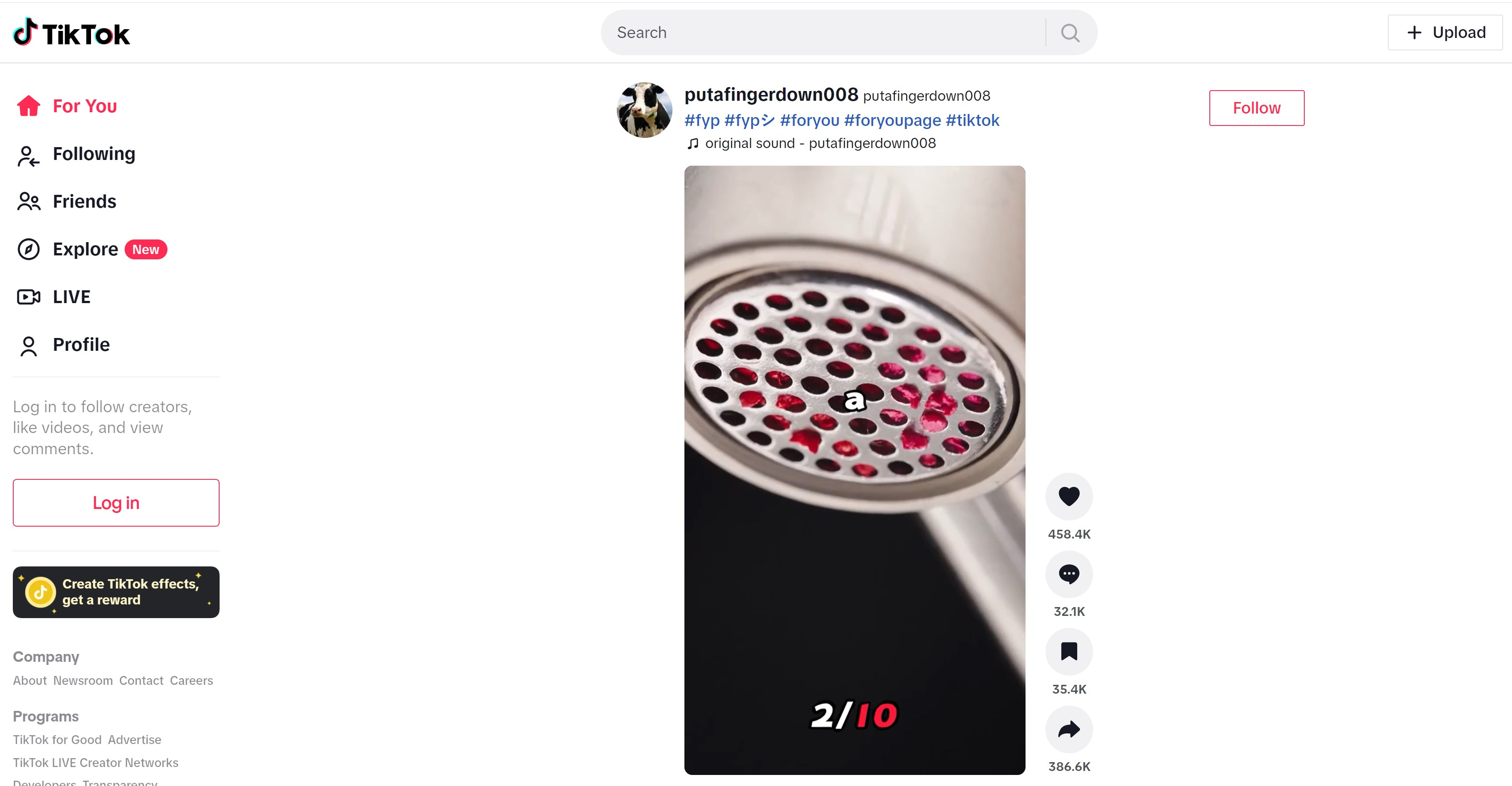
A relative newcomer to the social media industry, TikTok has revolutionized how we perceive and consume short-form video clips.
Launched in 2017 by the Chinese company ByteDance, TikTok started with humble beginnings and was known primarily for dance videos to popular songs.
It has rapidly become a global phenomenon, captivating users with its unique blend of short-form videos and full-screen displays.
I found a few stats that show how far TikTok has grown over the years:
- Over 1 billion active users
- 1239% growth rate from 2018 - 2023
- Users spend an average of 55 minutes on TikTok.
TikTok has evolved beyond mere entertainment, becoming a powerful tool for brand promotion, social activism, and instructional how-to content.
The platform's emphasis on authenticity and relatability over polish and perfection has resonated deeply with younger audiences, establishing TikTok as a cultural mainstay.
YouTube vs TikTok Comparison
In the dynamic landscape of digital content creation, understanding the core differences between YouTube vs TikTok is crucial for creators and users.
This knowledge informs the strategic approach to content creation and helps align with platforms that best serve individual goals and audience preferences.
Audience and Reach
Google is the only other digital platform in the world with a bigger audience and reach than YouTube. With over 2.5 billion users, YouTube caters to a diverse user base that spans age, background, and interests.
How much money is 1 billion views on YouTube really? Here's the answer.
Virtually anyone looking for information, entertainment, education, or inspiration will find it on YouTube.
Despite having a "smaller" user base of around 1 billion, TikTok is outpacing YouTube in terms of growth. The platform is geared more towards the younger demographic, particularly Gen Z and young millennials, who are drawn to its quick, engaging, and trend-driven content.
If you find yourself more entertained by trends, fun content, and short-form videos, TikTok might be your better platform.
Type of Content
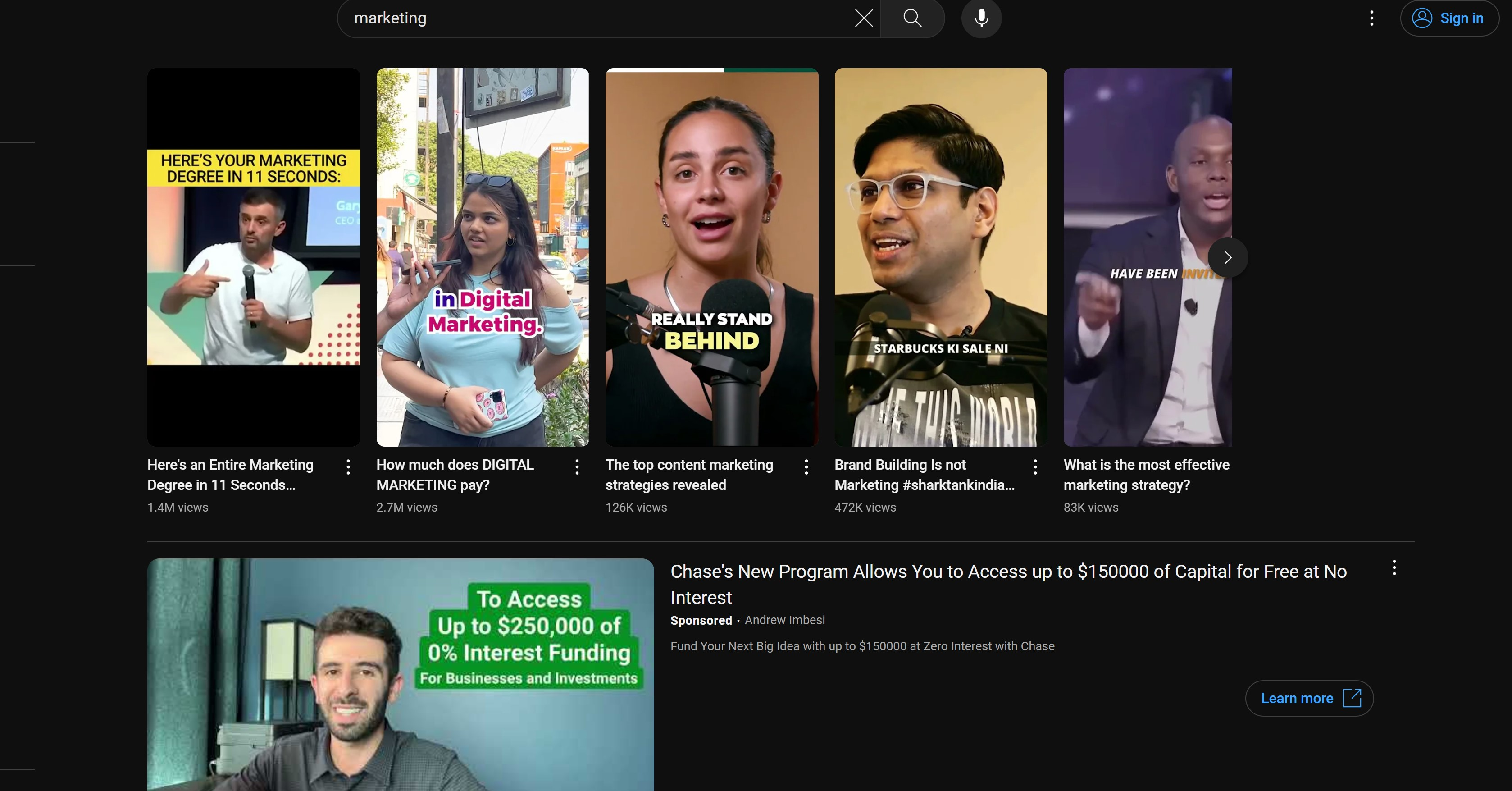
One of the main differences between YouTube and TikTok is the type of content each platform is known for.
On YouTube, videos can be as long as you want, with no maximum length restrictions. This flexibility paves the way for all types of content, from quick, entertaining YouTube Shorts to comprehensive educational workshops that last several hours.
Because of how the platform was initially designed, Creators on TikTok can only record for up to 10 minutes.
TikTok is reconsidering its 10-minute restriction to start competing with longer-form content, but its core has always been short videos.
The shorter restrictions have forced creators on TikTok to focus on straightforward videos that deliver a quick message.
Advertisements

YouTube and TikTok both allow creators and brands to advertise on their platforms, but how those ads work varies slightly.
YouTube's longer history has allowed the company to refine its ad system. The platform provides several ad formats similar to traditional TV with some new twists.
Here are a few types of YouTube ad formats:
- Display ads
- Overlay ads
- Skippable ads
- Bumper ads.
Newer to social media and advertisements, TikTok is innovating how ads are used and displayed to connect with a younger audience.
Here are a few innovative ways TikTok is advertising to its user base:
- Branded hashtag challenge
- Branded effects like stickers, AR filters, lenses
- Spark ads
- In-feed ads
- Top view ads
- Brand takeover ads.
This approach makes ads less intrusive and more engaging for TikTok's highly active and younger user base.
Music and Audio
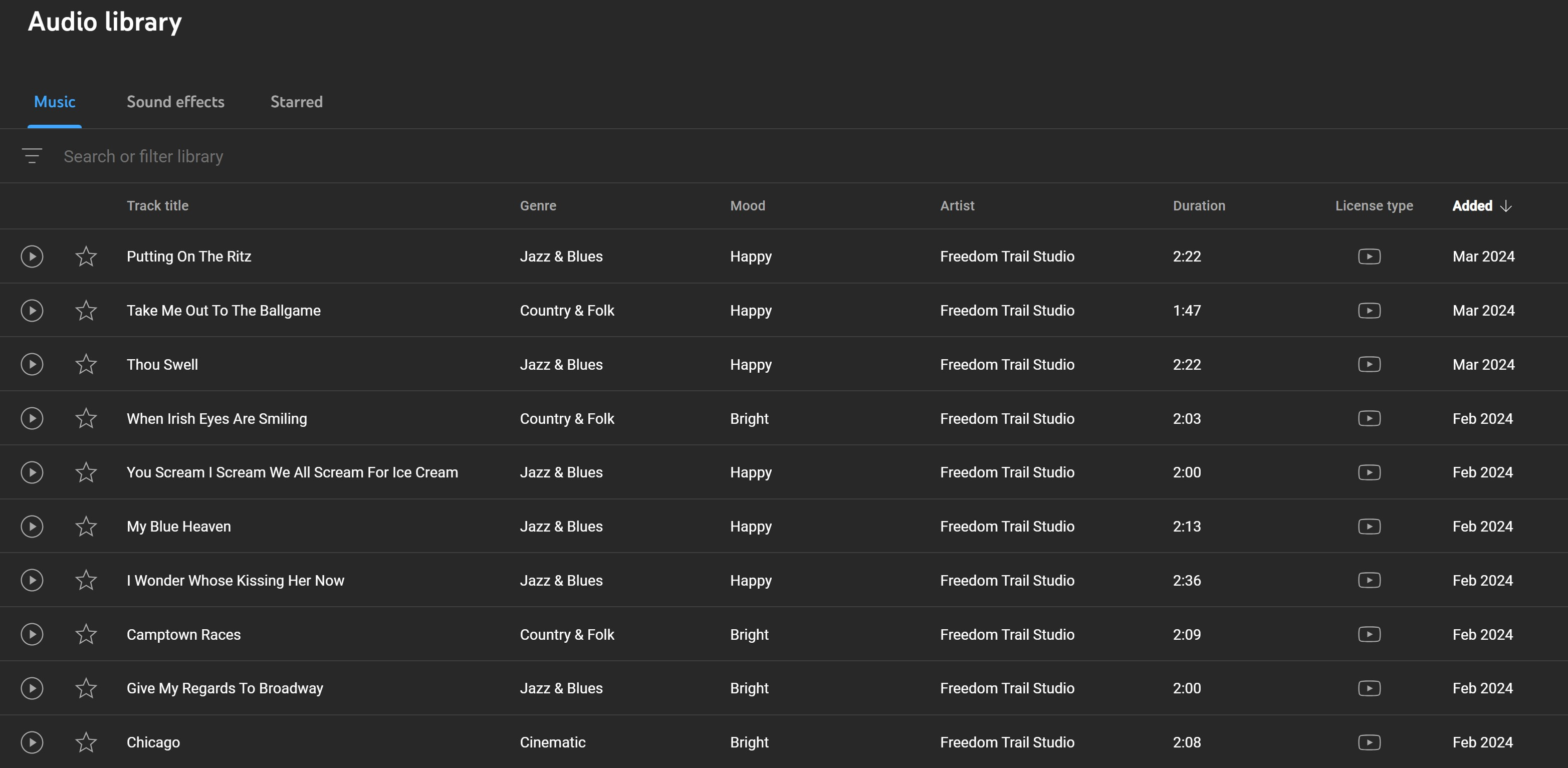
YouTube and TikTok have developed features to help creators seamlessly integrate sound into their videos.
I found that YouTube has a comprehensive audio library full of royalty-free music and sound effects that creators can use in their content without worrying about copyright infringement. But, if you venture outside the library to use popular music, you must obtain the artist's permission.
TikTok, on the other hand, is a more flexible platform. You can use any trending song in short-form videos without worrying about copyright issues.
You can add more audio features, such as text-to-speech voiceovers or original creator sounds, to create content that is more engaging.
Pro Tip: Use TikTok videos if you don't want to worry about legal issues when using music that has a copyright.
Creator Compensation
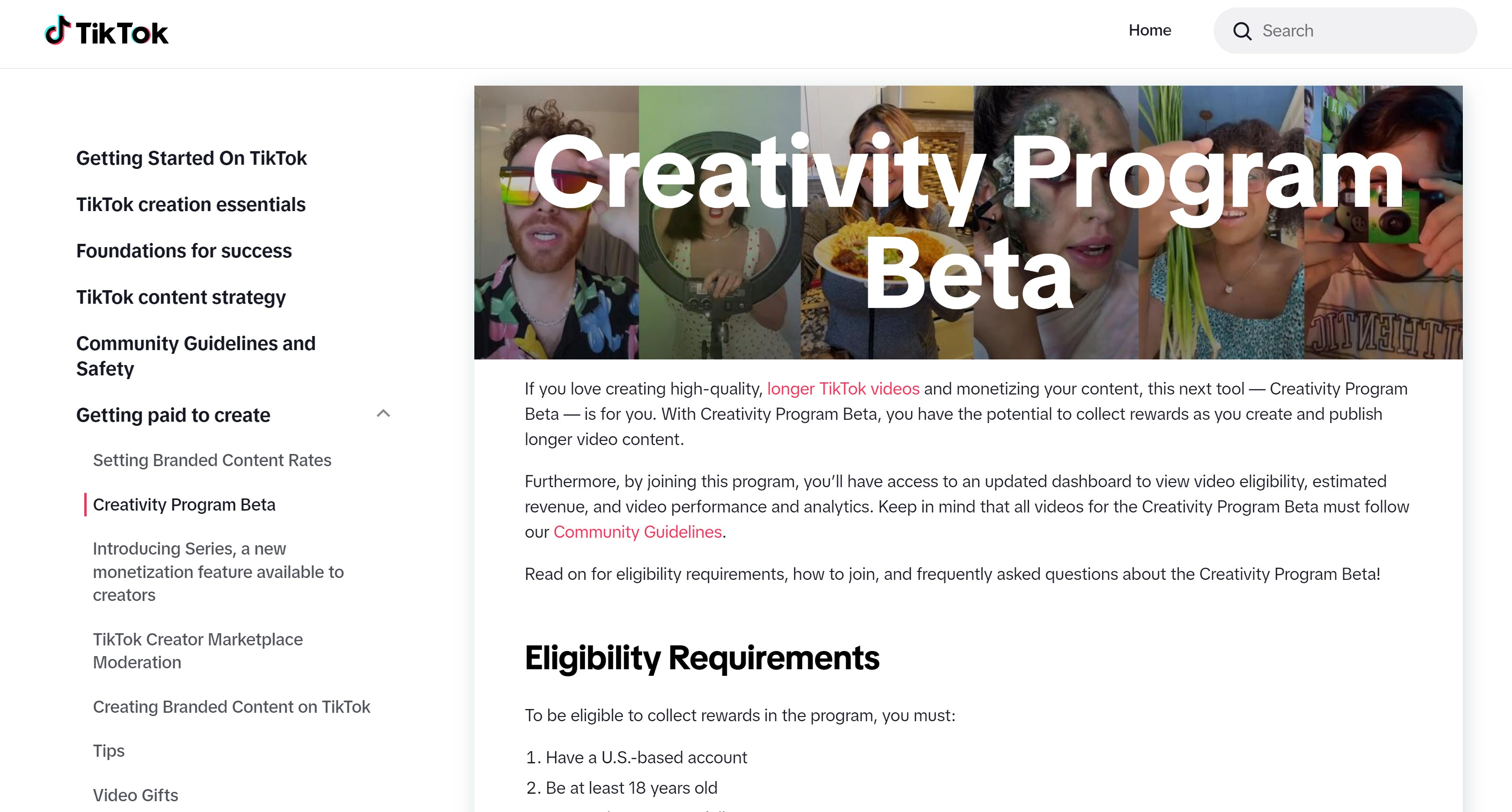
One of the biggest discrepancies between the two video platforms is how creators get paid.
YouTube pays out creators for two distinct reasons: content views and advertisements. Every view from your YouTube channel counts for a percentage of money, and creators earn a portion of that money.
Allowing ads to display before, during, or on top of your content will also contribute to the overall payout. I've found it difficult to understand exactly how much money you can make on YouTube.
On the other hand, TikTok has undergone some changes in its approach to creator compensation.
Previously, the platform had a Creator Fund that paid creators based on views and engagement. That fund has now been shut down, and the Creator Program has taken its place.
Under this program, creators are still compensated based on views, but they are incentivized to create longer user-generated content. I recommend taking advantage of this new offer since there will be less competition.
How do you make money on TikTok? This comprehensive guide explains it all.
YouTube vs TikTok: Which is Easier to Use
YouTube is part of the original subscribe and follow movement, which allows you to stay up-to-date on your favorite creators. The platform has been carefully designed around channel memberships, so you have plenty of opportunities to engage with creators.
YouTube was initially built before the era of mobile dominance, tailored primarily for PC or laptop interfaces.
While YouTube has adapted well to mobile screens, I found the performance, features, and user experience are much better when you use a computer.
TikTok was built from the ground up primarily for mobile. It capitalizes on the immediacy and simplicity of short-form content.
Its interface is streamlined to deliver video after video, minimizing barriers between you and the next piece of content.
The design makes it easy to get lost in content, but it doesn't allow as much direct engagement with creators outside of liking, commenting, or sharing videos. The platform's algorithm-driven feed prioritizes content discovery over creator subscriptions.
Pricing Comparison
While creators don't have to pay anything for access to start creating content, users have pricing options to choose from. Each plan offers something unique and will help you determine where you want to start.
YouTube Pricing
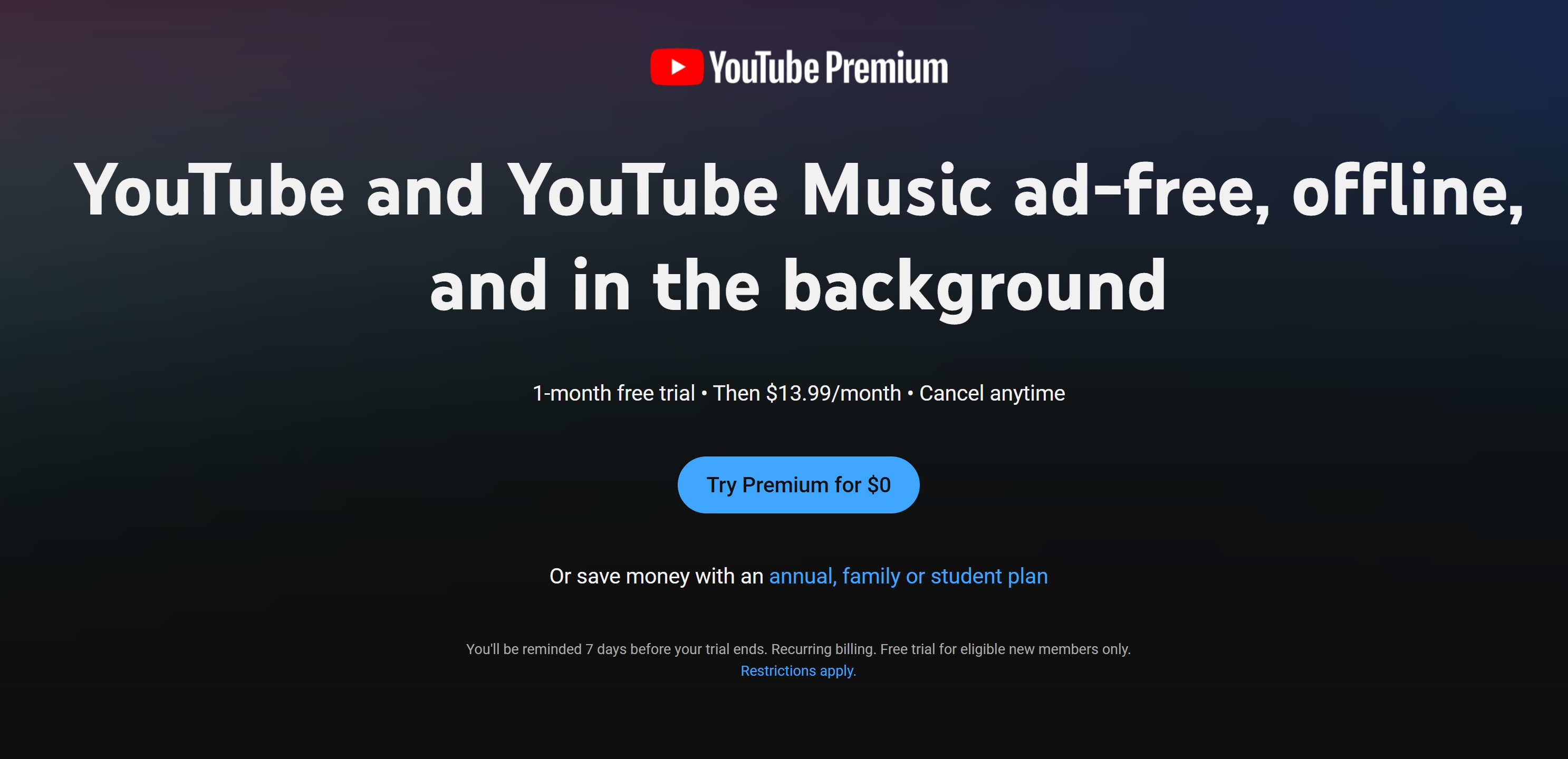
You can watch all your favorite videos and shorts on YouTube for free with no additional charges. The free access does come with a caveat: ads are interspersed throughout the content.
If you want ad-free viewing, you'll pay a flat fee per month. Other perks include background playback, YouTube Music, and other features.
There's also a newer service offered called YouTube TV. You'll get live TV from major broadcast channels and popular cable networks here. On-demand videos and DVR features are included so you don't miss any action.
Here is how YouTube's pricing breaks down:
- YouTube - Free
- YouTube Premium - $13.99/mo
- YouTube Family - $22.99/mo
- YouTube Student - $7.99/mo
I've found that YouTube's pricing structure caters to a broad audience, from casual viewers with ad-supported access to dedicated users willing to pay for premium features.
TikTok Pricing
The younger TikTok platform operates under a completely free-to-use model without any premium tier or subscription service available at this time.
The simplified approach makes it easy for anyone to access, but it does not mean you have to sit through advertisements while scrolling through the video-sharing app.
The ads are integrated into your feed while you scroll, appearing as just another video, which is exactly how Facebook or Instagram include their post ads.
If I were you, I'd take advantage of TikTok's free platform as long as possible. It's only a matter of time before the platform follows suit and starts offering tiered pricing plans.
Best YouTube and TikTok Tools for Creators
While both YouTube and TikTok offer a range of built-in tools to enhance content creation, to truly maximize their impact and efficiency, you'll need something more powerful.
These tools can provide advanced editing capabilities, in-depth analytics, and marketing automation features that go beyond what the platforms themselves offer.
TubeBuddy
TubeBuddy is a versatile browser extension and mobile app that offers YouTube creators a suite of tools designed to streamline the video publishing process, optimize content, and grow their channels.
It's equipped with features such as keyword research, video SEO, bulk processing capabilities, and automated tasks that can save creators hours of work.
What makes TubeBuddy an invaluable tool for YouTube creators is its ability to provide real-time insights and suggestions based on YouTube's best practices.
Pricing: Pro – $7.50/mo, Legend – $32.99/mo, Enterprise – Custom
Canva
Canva is a user-friendly graphic design tool that empowers creators on YouTube and TikTok to produce eye-catching thumbnails, banners, and social media posts with ease.
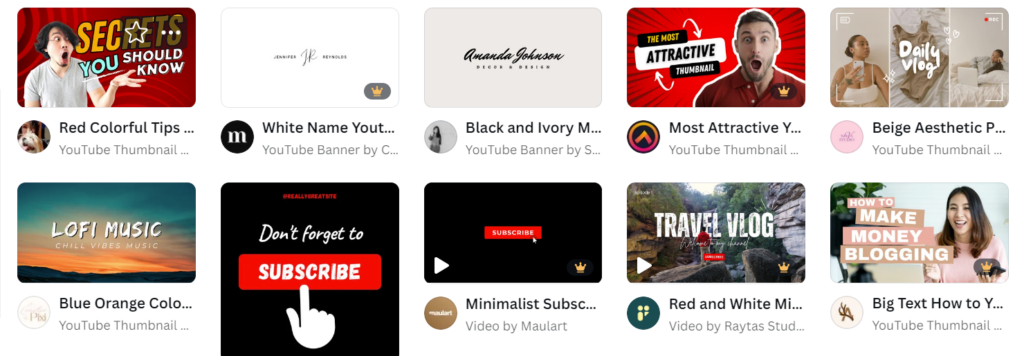
Its drag-and-drop interface, along with a vast library of templates, images, and fonts, simplifies the design process, making professional-looking visuals accessible to all skill levels.
For content creators, Canva is an essential tool to enhance their brand's visual appeal and engage their audience more effectively.
Pricing: Free, Pro – $14.99/month per person, Teams – $12/month per person (minimum 2 people $24/month), Enterprise – Custom.
VidIQ
VidIQ is an advanced analytics and optimization software designed to aid YouTube content creators in expanding their channels' reach and efficiency.
By offering insights into search terms, competitor data, and optimal posting times, VidIQ enables creators to understand their audience deeply and tailor their content strategically to maximize engagement and growth.
Its ability to track performance metrics and suggest improvements makes it an indispensable tool for creators looking to refine their content strategy and elevate their online presence.
Pricing: Pro – $5/mo, Boost – $24.50/mo, Coaching – $159/mo
YouTube vs TikTok: A Clear Winner
When pitting YouTube vs TikTok, YouTube emerges as the clear victor for several reasons. The well-established YouTube ecosystem makes it easy for creators and users to get exactly what they need from the platform.
It has a larger audience base, allows for different kinds of content, and is the second most visited platform in the world, behind Google.
Whether you're trying to start a new channel or just looking for the best content on the internet, YouTube can do it all.
Want to learn step-by-step how I built my Niche Site Empire up to a full-time income?
Yes! I Love to Learn
Learn How I Built My Niche Site Empire to a Full-time Income
- How to Pick the Right Keywords at the START, and avoid the losers
- How to Scale and Outsource 90% of the Work, Allowing Your Empire to GROW Without You
- How to Build a Site That Gets REAL TRAFFIC FROM GOOGLE (every. single. day.)
- Subscribe to the Niche Pursuits Newsletter delivered with value 3X per week
My top recommendations
